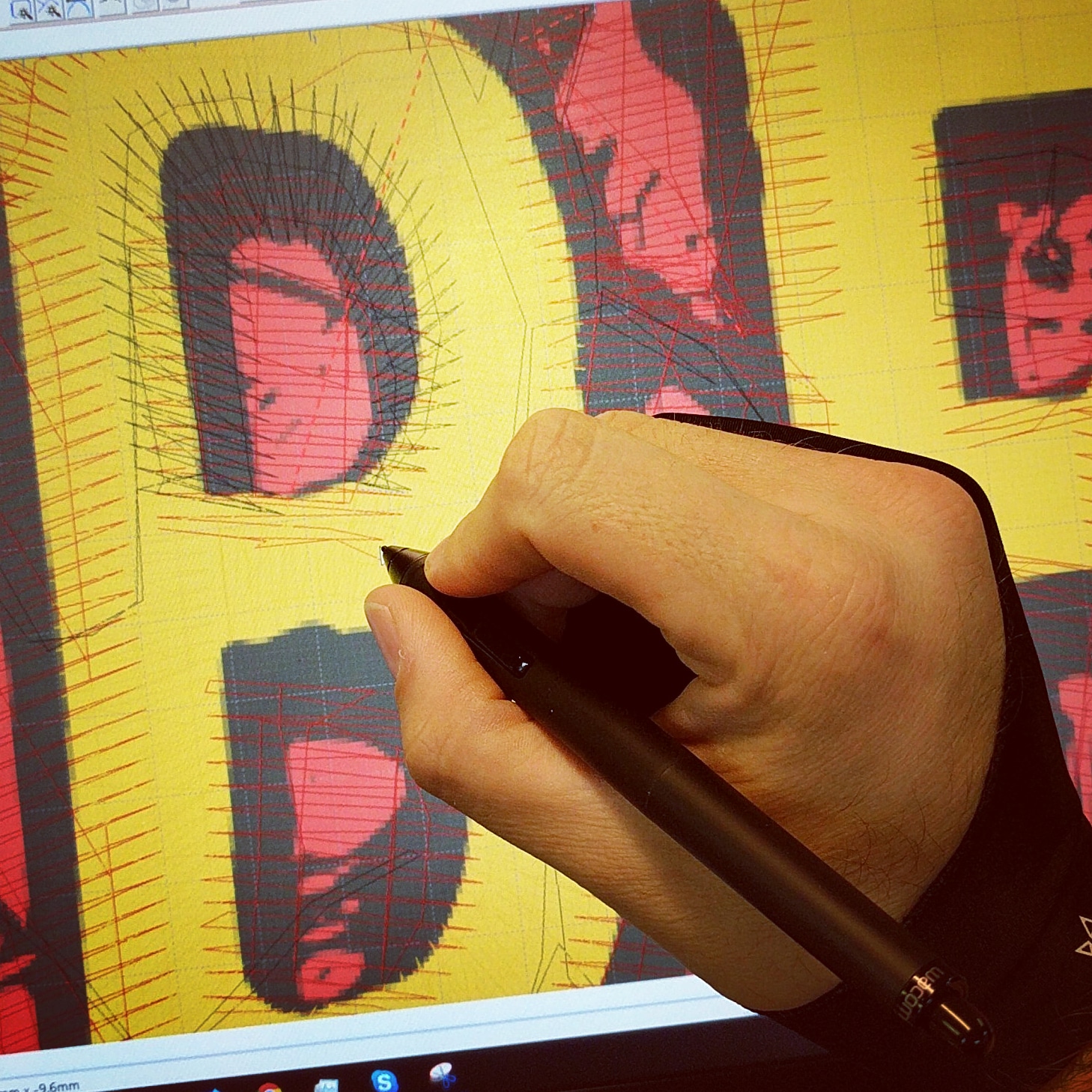Ideal Digitizing for Embroidery: Enhance Your Jobs
Ideal Digitizing for Embroidery: Enhance Your Jobs
Blog Article
Mastering the Embroidery Digitizing Refine: Your Ultimate Overview
Needlework digitizing is a precise craft that needs precision and knowledge to translate complex designs into electronic formats for maker needlework. As artisans start this trip to master the embroidery digitizing procedure, a thorough understanding of the essentials sets the foundation for excellence. Beyond the primary understanding exists a world of sophisticated software application, specialized tools, and nuanced methods waiting to be explored. By diving right into the subtleties of digitizing, one can unlock a world of creative opportunities and raise their embroidery projects to brand-new elevations.

Recognizing Needlework Digitizing Fundamentals
Needlework digitizing essentials form the structure whereupon complex styles are translated into machine-readable styles for exact sewing. This initial action in the needlework digitizing procedure is critical for ensuring that the final embroidered item is a loyal representation of the original style. Comprehending needlework digitizing essentials includes grasping vital principles such as stitch kinds, sew direction, thickness, underlay, and draw compensation.
Sew kinds play an important duty in identifying the visual and textural result of the stitched layout. By selecting the suitable stitch type, whether it be satin, fill, or running stitch, digitizers can attain the preferred effect and improve the total quality of the embroidery. Additionally, sew instructions influences the circulation and measurement of the style, while density establishes the spacing and insurance coverage of the stitches.
In addition, rug stitching supplies stability to the design by safeguarding the textile and avoiding distortion throughout the embroidery procedure. Draw payment is an additional necessary consideration to neutralize the natural tendency of textile to contract when sewn. Understanding these needlework digitizing basics is basic for developing professional-quality stitched products.
Choosing the Right Digitizing Software Application
Picking the suitable digitizing software is an essential choice that substantially impacts the performance and quality of the needlework digitizing procedure. Digitizing for Embroidery. When selecting the appropriate digitizing software program, it is crucial to consider aspects such as the intricacy of styles you prepare to create, the user-friendliness of the software, the degree of client support used, and the compatibility with your needlework equipment
There are numerous digitizing software program options offered in the market, ranging from basic programs for newbies to innovative software for expert digitizers. Some prominent selections include Wilcom EmbroideryStudio, Hatch Embroidery Software, and PulseID. These software application plans provide a wide variety of tools and features to help you create detailed layouts with simplicity.
Before making a decision, it is recommended to discover the different software alternatives through cost-free tests or demonstrations to determine which one ideal matches your demands. In addition, reviewing evaluations and seeking referrals from seasoned digitizers can supply useful understandings right into the strengths and weaknesses of each software application bundle (Digitizing for Embroidery). By very carefully assessing your demands and contrasting the functions of various digitizing software program, you can make an educated selection that boosts your embroidery digitizing operations
Digitizing Tools and Strategies

Optimizing Design Settings for Needlework
Mastering the details of style setups is basic in accomplishing optimum cause the needlework digitizing process, building upon the foundation laid by comprehending digitizing devices and methods. When maximizing style setups for needlework, it is important to consider factors such as stitch kind, density, padding, pull settlement, and registration. Sew kind selection impacts the general feel and look of the design, with alternatives like satin, fill, and running stitches offering different appearances and impacts. why not try here Density describes the spacing and density of stitches, affecting the design's protection and toughness. Proper padding stitching provides security and avoids material distortion, particularly for complicated layouts or on stretchy materials. Pull payment adjusts for material stretch during stitching, making sure precise style replication. Enrollment setups straighten different elements of the design accurately, preserving overall layout stability. By fine-tuning these style setups, embroiderers can enhance the quality and accuracy of their embroidered developments.

Troubleshooting Common Digitizing Issues
When encountering common digitizing issues during the embroidery procedure, it is vital to recognize the origin causes and execute reliable services immediately. One common problem is stitch thickness concerns, where stitches may be too dense, causing the fabric to tighten, or too sporadic, bring about spaces Click This Link in the style. Adjusting the stitch thickness settings in the digitizing software program can assist resolve this problem.
An additional frequent difficulty is thread breaks throughout the needlework procedure. This can occur as a result of different reasons such as incorrect stress setups, plain needles, or using low-grade thread. Making certain proper maintenance of the embroidery machine, consisting of normal needle adjustments and stress adjustments, can minimize the event of thread breaks.
Furthermore, style registration mistakes can result in misaligned elements within the embroidery style. Examining the layout placement in the digitizing software application and making needed adjustments prior to stitching can assist in preventing this issue. By resolving these common digitizing issues immediately and properly, you can guarantee a smoother needlework process and high-grade ended up products.
Conclusion
In verdict, mastering the embroidery digitizing process calls for a solid understanding of the essentials, the right selection of software program, and understanding of devices and techniques. Enhancing style settings and troubleshooting typical digitizing problems are essential action in ensuring top quality embroidery results. By following these actions faithfully, one can attain accuracy and effectiveness in the digitizing this hyperlink procedure.
Report this page